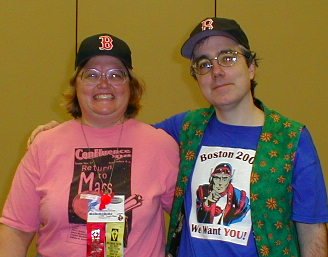The Totally Geeky Guide to the Princess Bride by MaryAnn Johanson
The Princess Bride is not only a very good film. It’s one of those films that many watch numerous times, that has a loyal, cult following, and that is full of lines that, if quoted, can be instantly identified as being from The Princess Bride. Monty Python and the Holy Grail probably has even more lines that are quoted even more often, but I’m hard presses to think of many other films that both have so many quotable lines and are quoted so often. (Lots of people may quote “Frankly, my dear, I don’t give a damn” but how many other Gone with the Wind quotes fit so many situations so well.)
The book – it’s really a long, multi-part essay – explores why The Princess Bride resonates so well with so many people. As she says, it’s funny, swashbuckling, magic, romantic, and mysterious – but so are other movies. What is it about this movie that makes it so memorable?
One part of it is the way it very consciously plays with our expectations of stories or movies. The whole story-within-a-story format enables it to comment on what’s going on and to draw us in in ways that we wouldn’t otherwise be drawn in. As she notes, “the film celebrates storytelling by deliberately and with comic afterthought pointing out how artificial storytelling is – and yet, at the same time, it is so effective an effective example of storytelling that even constant reminders that what we are being presented is fake cannot undermine it.”
A great example of this that she cites as an example is when Princess Buttercup, trying to swim away from her captors, is pursued by the fire eels. Things look bleak and hopeless; tension builds. And then the narrator breaks in to say “She doesn’t get eaten by the eels at this time.” Well, of course she doesn’t. We deep down know that she couldn’t, but we fall in for the tension in films when this happens anyway, just like in Raiders of the Lost Arc we get tense and excited when Indy is trapped in the Well of Souls with the snakes, even though we know he can’t possibly be killed. The Princess Bride draws us into this type of storytelling, then reverses it to wonderful effect and humor.
MaryAnn explores this relationship between our expectations of storytelling and how The Princess Bride plays on those in some detail, exploring a number of interesting facets of this, but always staying engaging and amusing. She also looks a bit at the uses of the framing story to pull readers in, how the movie is really about “true love” (and why those among us of a somewhat cynical bent accept that in this movie when we don’t in so many other more earnest romances), and even a bit about how it relates to the theater of the absurd (though again, at a more pop-culture level, not at an academic level).
One aspect that she alludes to though doesn’t explore directly that I think is another key reason for the continued popularity of The Princess Bride is the quality of the writing, especially in terms of the sharpness of the dialog (which also ties into why it’s quoted so often). In the 1930s and 1940s, the dialog in so many movies sparkled. But these days, that’s less common, as the emphasis is more on plotting, visuals, etc. (The extreme case of this is George Lucas, who doesn’t seem to understand the value of good dialog at all, but who is masterful in terms of visuals.) It’s not universally true. We do still get some great films that are driven by wonderful writing: Shakespeare in Love is a great example here. But it’s much rarer than it used to be. But that’s another thing that makes The Princess Bride special.
At 88 pages, the book is a fast read, one that you can devour at one sitting. It’s both amusing and insightful. I’d be interested to see her look in more depth at some of the other movies in her top 100 some day, many of which also would be well served by this sort of “geeky” analysis.


0 Comments:
Post a Comment
<< Home